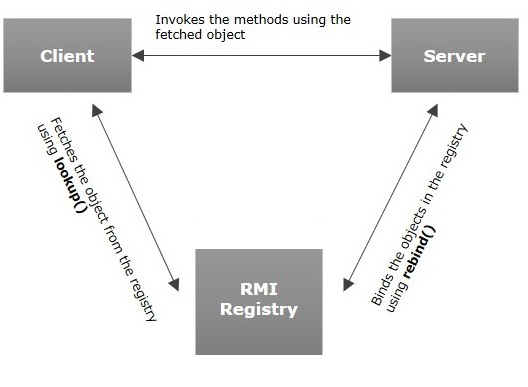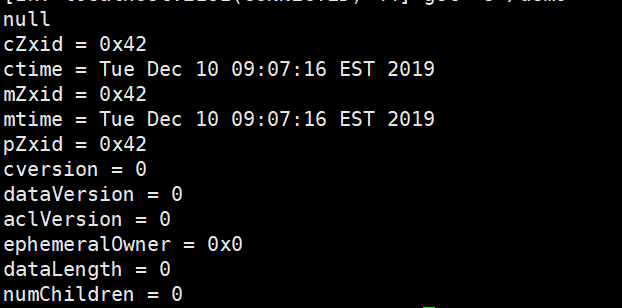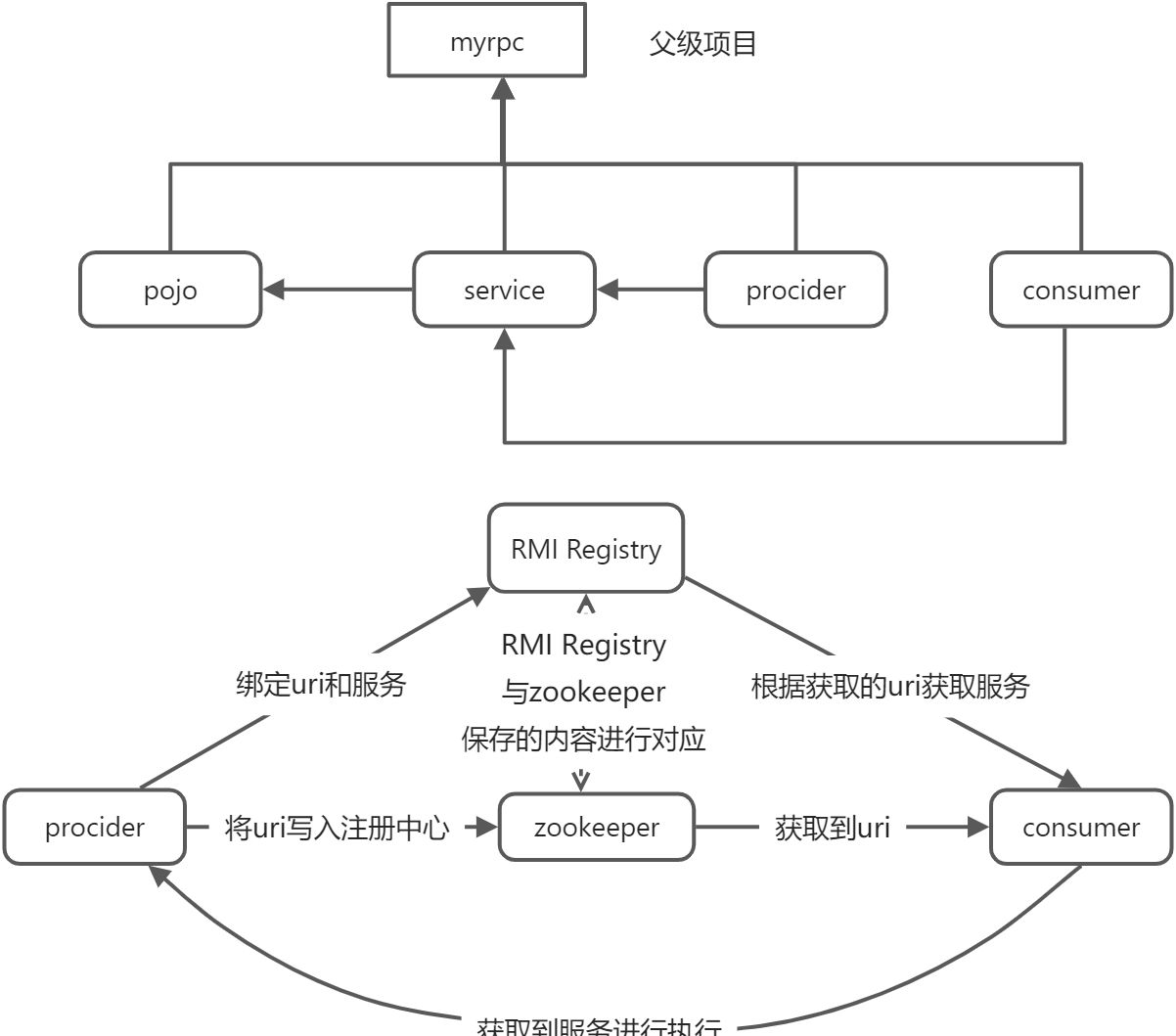1 项目架构变化
单体项目架构
单体项目架构:一个项目里包含这个项目的全部代码,一个应用搞定全部功能。
DNS服务器可以是单映射,也可以是多映射。
单体项目架构中,团队通过包名(package)区分每个模块
项目名:-- com--msb-- common-- utils--user-- controller-- service-- mapper-- sys-- controller-- service-- mapper
优点:部署简单、维护方便、成本低
缺点:当项目规模大、用户访问频率高、并发量高、数据量大时,大大降低程序执行效率,甚至出现宕机情况。
适用项目:单体架构项目适用传统管理项目、小型互联网项目
分布式架构
分布式架构把一个项目按照特点要求(不同模块、功能)拆分为多个项目,分别部署到不同的服务器上。
项目1:
--com.msb.xxx
-- controller
-- service
-- mapper
项目2
--com.msb.mmm
-- controller
-- service
-- mapper
优点:增大系统的可用性,减少单点故障导致整个应用不可用的风险;增加重用性,模块化重用性更高;增加扩展性,有新模块增加新的项目即可;增加每个模块的负载能力。
缺点:成本更高、架构更复杂、整体响应变长(一些业务需要多项目通信后给出结果),吞吐量更大。
分布式架构中各个模块如何通信?——采用Http协议、RPC协议等。与HTTP协议相比,RPC协议更适合项目内部通信。
2 RPC简介
Request For Comments(RFC),是一系列以编号排定的文件。文件收集了有关互联网相关信息,以及UNIX和互联网社区的软件文件。RFC文件是由Internet Society(ISOC)赞助发行。基本的互联网通信协议都有在RFC文件内详细说明。RFC文件还额外加入许多在标准内的论题,例如对于互联网新开发的协议及发展中所有的记录。因此几乎所有的互联网标准都有收录在RFC文件之中。
RPC就就收集在RFC1831中: https://datatracker.ietf.org/doc/rfc1831/
RPC(Remote Procedure Call)远程调用协议
RPC协议规定允许互联网中一台主机程序调用另一台主机程序,而程序员无需对这个交互过程进行编程。在RPC协议中,强调A程序调用B程序中的方法或功能时,A程序不知道B程序的具体实现。
RPC是上层协议,底层可以基于TCP,也可基于HTTP协议,一般所说的RPC都是基于RPC的具体实现,如Dubbo框架。广义上满足网络中进行的通讯调用都统称为RPC,甚至HTTP都可以说是RPC的具体实现,但是具体分析来看RPC协议要比HTTP协议更加高效,基于RPC的框架功能更多。
RPC协议与HTTP协议对比
具体实现:
- HTTP基于TCP实现,
- RPC可以基于TCP实现,也可基于HTTP实现
效率:
- HTTP 1.1 报文中很多内容是无用的;HTTP 2.0以后与RPC相差不大,与RPC相比少一些服务治理功能
- RPC自定义具体实现可以减少很多无用报文内容,使得报文体积更小,传输效率更高
连接方式:
- HTTP 1.1 每次连接都是3次握手
- RPC可以长连接
性能
- HTTP主要通过JSON,序列化和反序列化效率更低
- RPC可以基于多种序列化方式
注册中心
- HTTP是直连方式
- RPC框架都用带有注册中心
负载均衡
- HTTP需借助第三方工具,如Ngix
- RPC框架大都带有负载均衡
综上:RPC框架带有丰富的服务治理等功能,更适合企业内部接口调用;而HTTP更适合多平台之间相互调用。
3 RPC 实现
HttpClient 实现RPC
@RestController
public class DemoController {
@RequestMapping("/demo")
public String demo(String name) {
return name + "你好";
}
}
/*
以上请求可直接通过浏览器访问请求到
*/
public class HttpClientGet {
public static void main(String[] args) {
try {
// 创建http工具,发起请求,解析响应
CloseableHttpClient httpClient = HttpClients.createDefault();
// 请求路径
URIBuilder uriBuilder = new URIBuilder("http://localhost:8080/demo");
// 添加请求参数
uriBuilder.addParameter("name", "张三丰");
// 创建HTTP GET 请求
HttpGet get = new HttpGet(uriBuilder.build());
// 创建响应
CloseableHttpResponse response = httpClient.execute(get);
// 响应体是字符串,因此把HttpEntity类型转换为字符串,并设置UTF-8字符编码
String content = EntityUtils.toString(response.getEntity(), "utf-8");
System.out.println(content);
// 关闭资源
response.close();
httpClient.close();
} catch (URISyntaxException | IOException e) {
e.printStackTrace();
}
}
}
public class HttpClientPost {
public static void main(String[] args) {
try {
// 创建http工具(理解成:浏览器) 发起请求,解析响应
CloseableHttpClient httpClient = HttpClients.createDefault();
// 创建HttpPOST请求对象
HttpPost httpPost = new HttpPost("http://localhost:8080/demo");
// 设置请求参数
List<NameValuePair> params = new ArrayList<>();
params.add(new BasicNameValuePair("name", "梅梅"));
// 创建HttpEntity 文本实现类对象,放入参数并设置字符编码
HttpEntity httpEntity = new UrlEncodedFormEntity(params, "utf-8");
// 将封装请求参数的HttpEntity 实现对象放入httpPost请求对象中
httpPost.setEntity(httpEntity);
// 执行请求并获得响应
CloseableHttpResponse response = httpClient.execute(httpPost);
// 响应文文本,转换为字符串打印显示
String content = EntityUtils.toString(response.getEntity(), "utf-8");
System.out.println(content);
response.close();
httpClient.close();
} catch (IOException e) {
e.printStackTrace();
}
}
}
public class HttpClientJson {
public static void main(String[] args) {
try {
CloseableHttpClient httpclient = HttpClients.createDefault();
HttpPost httpPost = new HttpPost("http://localhost:8080/demo");
// JackSon将Person转换为JSON字符串
ObjectMapper objectMapper = new ObjectMapper();
Person person = new Person(1,"不知火");
String param = objectMapper.writeValueAsString(person);
// 设置请求参数为json数据
StringEntity entity = new StringEntity(param, ContentType.APPLICATION_JSON);
httpPost.setEntity(entity);
CloseableHttpResponse response = httpclient.execute(httpPost);
String content = EntityUtils.toString(response.getEntity());
System.out.println(content);
//将json字符串转换为对象
Person person2 = objectMapper.readValue(content, Person.class);
System.out.println(person2);
response.close();
httpclient.close();
} catch (IOException e) {
e.printStackTrace();
}
}
}
JackSon用法
3.1 把对象转换为json字符串
ObjectMapper objectMapper = new ObjectMapper();
People peo = new People();
objectMapper.writeValueAsString(peo);
3.2 把json字符串转换为对象
ObjectMapper objectMapper = new ObjectMapper();
People peo = objectMapper.readValue(content, People.class);
3.3 把json字符串转换为List集合
ObjectMapper objectMapper = new ObjectMapper();
JavaType javaType = objectMapper.getTypeFactory().constructParametricType(List.class, People.class);
List<People> list = objectMapper.readValue(content, javaType);
请求参数是json数据且请求的Content-Type=”application/json”,在控制器参数中使用@RequestBody注解,把请求体中流数据转换为指定对象
@RequestMapping("/demo4")
@ResponseBody
public String demo4(@RequestBody List<People> list) {
System.out.println(list);
return list.toString();
}
ajax发送json请求
var json = '[{"id":123,"name":"msb"},{"id":123,"name":"mashibing"}]';
$.ajax({
url:'/demo5',
type:'post',
success:function(data){
alert(data);
for(var i = 0 ;i<data.length;i++){
alert(data[i].id +" "+data[i].name);
}
},
contentType:'application/json',//请求体中内容类型
dataType:'json',//响应内容类型。
data:json
});
注意:ajax请求是要求同源的(同源策略:浏览器默认只允许ajax访问同源(协议、ip、端口都相同)的内容。只要协议、ip、端口有一个不同就是跨域请求。
结局同源策略,在服务器端配置CrossOrigin注解,或者设置CrossConfig配置,本质实在响应头中添加Access-Control-Allow-Origin:*
@Configuration
public class CorsConfig {
private CorsConfiguration buildConfig() {
CorsConfiguration configuration = new CorsConfiguration();
// 你需要跨域的地址 注意这里的 127.0.0.1 != localhost
// * 表示对所有的地址都可以访问
configuration.addAllowedOrigin("http://localhost:8000");
// 跨域的请求头
configuration.addAllowedHeader("*");
// 跨域的请求方法
configuration.addAllowedMethod("*");
//加上了这一句,大致意思是可以携带 cookie
//最终的结果是可以 在跨域请求的时候获取同一个 session
configuration.setAllowCredentials(true);
return configuration;
}
@Bean
public CorsFilter corsFilter() {
UrlBasedCorsConfigurationSource source = new UrlBasedCorsConfigurationSource();
source.registerCorsConfiguration("/**", buildConfig());
return new CorsFilter(source);
}
}
RMI 实现RPC
RMI(Remote Method Invocation) 远程方法调用;RMI是从JDK1.2推出的功能,它可以实现在一个Java应用中可以像调用本地方法一样调用另一个服务器中Java应用(JVM)中的内容。RMI 是Java语言的远程调用,无法实现跨语言。
RMI执行流程:
Registry(注册表)是放置所有服务器对象的命名空间。 每次服务端创建一个对象时,它都会使用bind()或rebind()方法注册该对象。 这些是使用称为绑定名称的唯一名称注册的。
要调用远程对象,客户端需要该对象的引用。即通过服务端绑定的名称从注册表中获取对象(lookup()方法)。
jdk RMI API
- java.rmi.Remote ,定义为远程调用接口,如果某接口方法被外部调用,需要继承此接口
- java.rmi.RemoteException,继承了Remote接口的接口,如果方法允许被远程调用,需要抛出此异常
- java.rmi.server.UnicastRemoteObject,该类实现了Remote接口和Serializable接口,自定义接口实现类,除了实现自定义接口,还需要继承此类
- jav.rmi.registry.LocateRegistry,可以通过LocateRegistry在本机上创建Registry(注册中心),通过特定的端口就可以访问这个Registry
- java.rmi.Naming,定义了发布内容可访问RMI名称,也是通过Naming获取指定的远程方法
// Service接口 继承Remote接口
public interface DemoService extends Remote {
// 接口被远程调用的方法 需要抛出RemoteException
public String demo(String name) throws RemoteException;
}
// 接口实现类 继承UnicastRemoteObject
public class DemoServiceImpl extends UnicastRemoteObject implements DemoService {
public DemoServiceImpl() throws RemoteException {
}
@Override
public String demo(String name) throws RemoteException {
return name+"你好";
}
}
// 定义服务类
public class DemoServer {
public static void main(String[] args) {
try {
// 创建接口实例
DemoService demoService = new DemoServiceImpl();
// 创建注册表
LocateRegistry.createRegistry(8989);
// 绑定服务
Naming.bind("rmi://localhost:8989/demoService",demoService);
} catch (RemoteException | AlreadyBoundException | MalformedURLException e) {
e.printStackTrace();
}
}
}
// Service接口 继承Remote接口
public interface DemoService extends Remote {
// 接口被远程调用的方法 需要抛出RemoteException
public String demo(String name) throws RemoteException;
}
public class DemoClient {
public static void main(String[] args) {
try {
// Naming.lookup方法,获取指定的远程方法,强制转换为接口类型
DemoService demoService = (DemoService) Naming.lookup("rmi://localhost:8989/demoService");
// 使用接口可被远程调用的方法
System.out.println(demoService.demo("张辉"));
} catch (NotBoundException | MalformedURLException | RemoteException e) {
e.printStackTrace();
}
}
}
4 Zookeeper
ZooKeeper 配置文件zoo.cfg
# The number of milliseconds of each tick
# ZooKeeper使用的基本时间单位(毫秒)。它用于做心跳,并且最小会话超时将是tickTime的两倍。
tickTime=2000
# The number of ticks that the initial
# synchronization phase can take
# 是超时ZooKeeper用于限制仲裁中的ZooKeeper服务器必须连接到领导者的时间长度
# zookeeper集群中的包含多台server, 其中一台为leader,
# 集群中其余的server为follower. initLimit参数配置初始化连接时,
# follower和leader之间的最长心跳时间.
# 此时该参数设置为10, 说明时间限制为10倍tickTime, 即10*2000ms=10000ms=20s.
initLimit=10
# The number of ticks that can pass between
# sending a request and getting an acknowledgement
# 限制了服务器与领导者之间的过时距离。
# 该参数配置leader和follower之间发送消息, 请求和应答的最大时间长度.
# 此时该参数设置为5, 说明时间限制为5倍tickTime, 即5*2000ms=10s.
syncLimit=5
# the directory where the snapshot is stored.
# do not use /tmp for storage, /tmp here is just
# example sakes.
# 存储内存数据库快照的位置,除非另有说明,否则存储数据库更新的事务日志。
dataDir=/myprogram/zookeeper/data
# the port at which the clients will connect
# 用于侦听客户端连接的端口
clientPort=2181
# the maximum number of client connections.
# increase this if you need to handle more clients
#maxClientCnxns=600
#
# Be sure to read the maintenance section of the
# administrator guide before turning on autopurge.
#
# http://zookeeper.apache.org/doc/current/zookeeperAdmin.html#sc_maintenance
#
# The number of snapshots to retain in dataDir
#autopurge.snapRetainCount=3
# Purge task interval in hours
# Set to "0" to disable auto purge feature
#autopurge.purgeInterval=1
Zookeeper客户端常用命令
进入到./zkCli.sh命令行工具后,可以使用下面常用命令
1、ls
ls [-s][-R] /path<br /> -s 详细信息,替代老版的ls2<br /> -R 当前目录和子目录中内容都罗列出来<br /> 例如:ls -R / 显示根目录下所有内容
2、create
create /path [data]<br /> [data] 包含内容<br /> 创建指定路径信息<br /> 例如:create /demo 创建/demo
3、get
get [-s] /path<br /> [-s] 详细信息<br /> 查看指定路径下内容。<br /> 例如: get -s /demo<br /><br />**null:**存放的数据<br />**cZxid:**创建时zxid(znode每次改变时递增的事务id)<br />**ctime:**创建时间戳<br />**mZxid:**最近一次更新的zxid<br />**mtime:**最近一次更新的时间戳<br />**pZxid:**子节点的zxid<br />**cversion:**子节点更新次数<br />**dataversion:**节点数据更新次数<br />**aclVersion:**节点ACL(授权信息)的更新次数<br />**ephemeralOwner**:如果该节点为ephemeral节点(临时,生命周期与session一样), ephemeralOwner值表示与该节点绑定的session id. 如果该节点不是ephemeral节点, ephemeralOwner值为0.<br />**dataLength**:节点数据字节数<br />**numChildren:**子节点数量
4、set
5、delete
Idea 连接Zookeeper
添加依赖,尽量保持与zookeeper服务器版本相同(安装zookeeper版本3.5.5,Idea导入依赖3.5.5正常使用,测试3.7.0依赖也正常使用)
<dependencies>
<dependency>
<groupId>org.apache.zookeeper</groupId>
<artifactId>zookeeper</artifactId>
<version>3.5.5</version>
</dependency>
</dependencies>
向Zookeeeper注册内容
注:这里可能出现异常:KeeperErrorCode = Connection Loss for path
排查顺序:
服务器端
1、检查Zookeeper服务是否启动(进入到zookeeper/bin目录,执行./zkServer.sh status)
2、检查服务器Zookeeper端口2181 是否打开(网上说永久关闭防火墙,实际是只需需要端口打开就行)
客户端
1、主机能够ping通服务器
2、检查连接IP地址和端口号是否正确(192.168.126.128:2181)
3、检查连接时长sessionTimeout 是否设置太短(本机需要设置20000毫秒,太短就连接不上)
public class MyApp {
public static void main(String[] args) {
try {
ZooKeeper zooKeeper = new ZooKeeper("192.168.126.128:2181", 20000, new Watcher() {
@Override
public void process(WatchedEvent watchedEvent) {
System.out.println("获取到连接");
}
});
/* 发送内容 向zookeeper 服务器中
参数1:发送的文件
参数2:发送的内容
参数3:权限
参数4:内容的模式
*/
String content = zooKeeper.create("/demo/rmi-address"
,"rim://localhost:8080/demoService".getBytes()
, ZooDefs.Ids.OPEN_ACL_UNSAFE
, CreateMode.PERSISTENT_SEQUENTIAL);
System.out.println("content"+content);
} catch (IOException | KeeperException | InterruptedException e) {
e.printStackTrace();
}
}
}
public class RecieveContent {
public static void main(String[] args) {
try {
ZooKeeper zooKeeper = new ZooKeeper("192.168.126.128:2181",
20000,(event)-> System.out.println("连接成功"));
List<String> list = zooKeeper.getChildren("/demo", false);
for (String s : list) {
byte[] data = zooKeeper.getData("/demo/" + s, false, null);
System.out.println(new String(data));
}
} catch (IOException | KeeperException | InterruptedException e) {
e.printStackTrace();
}
}
}
5 应用RMI与Zookeeper手写简单RPC框架
创建父级项目myrpc
创建子项目:pojo
创建子项目:service
创建子项目:provider(serviceImpl)
创建子项目:consumer 
pojo子项目用于pojo统一管理
@NoArgsconstructor
@AllArgsConstructor
@Data
public class Person implements Serializable {
private static final long serialVersionUID = 9005448934005102545L;
private Integer id;
private String name;
}
service子项目用于服务统一管理
// 该接口可被远程调用 需继承Remote接口
public interface DemoService extends Remote {
// 可被远程调用的方法需抛出RemoteException
String demo(Person person) throws RemoteException;
}
provider子项目,实现service接口方法,并使用RMI和Zookeeper实现远程调用注册
// 实现可被远程调用的接口时,需继承UnicastRemoteObject类,并重写构造方法为public
public class DemoServiceImpl extends UnicastRemoteObject implements DemoService {
private static final long serialVersionUID = 6892850469247154478L;
public DemoServiceImpl() throws RemoteException {
super();
}
@Override
public String demo(Person person) throws RemoteException {
String content = "";
try {
ObjectMapper objectMapper = new ObjectMapper();
content = objectMapper.writeValueAsString(person);
return content;
} catch (JsonProcessingException e) {
e.printStackTrace();
}
return content;
}
}
public class ProviderRun {
public static void main(String[] args) {
try {
DemoServiceImpl demoService = new DemoServiceImpl();
// LocateRegister 注册服务端口号
LocateRegistry.createRegistry(8888);
String uri = "rmi://localhost:8888/demoService";
// 绑定uri和服务
Naming.bind(uri, demoService);
// 将服务保存到zookeeper注册中心
ZooKeeper zooKeeper = new ZooKeeper("192.168.126.128:2181", 20000, event -> System.out.println("连接zookeeper成功"));
// 将uri 保存到节点 /demo/demoService下
String content = zooKeeper.create("/demo/demoService", uri.getBytes(), ZooDefs.Ids.OPEN_ACL_UNSAFE, CreateMode.PERSISTENT);
System.out.println("content:" + content);
} catch (AlreadyBoundException | IOException | KeeperException | InterruptedException e) {
e.printStackTrace();
}
}
}
consumer 子项目用于远程调用DemoService接口中的方法
public interface ConsumerService {
String demo(Person person);
}
@Service
public class ConsumerServiceImpl implements ConsumerService {
@Override
public String demo(Person person) {
String content = "";
try {
ZooKeeper zooKeeper = new ZooKeeper("192.168.126.128:2181", 20000, evevt -> System.out.println("连接zookper成成功"));
// 获取/demo/demoService节点下的内容
byte[] data = zooKeeper.getData("/demo/demoService", null, null);
String uri = new String(data);
// Naming.lookup()方法查找绑定的服务
DemoService demoService = (DemoService) Naming.lookup(uri);
content = demoService.demo(person);
} catch (IOException | KeeperException | InterruptedException | NotBoundException e) {
e.printStackTrace();
}
return content;
}
}
@Controller
public class ConsumerController {
ConsumerService consumerService;
@Autowired
public ConsumerController(ConsumerService consumerService) {
this.consumerService = consumerService;
}
@RequestMapping("/demo")
@ResponseBody
public String demo(Person person) {
String s = consumerService.demo(person);
System.out.println(s);
return s;
}
}
浏览器访问结果


